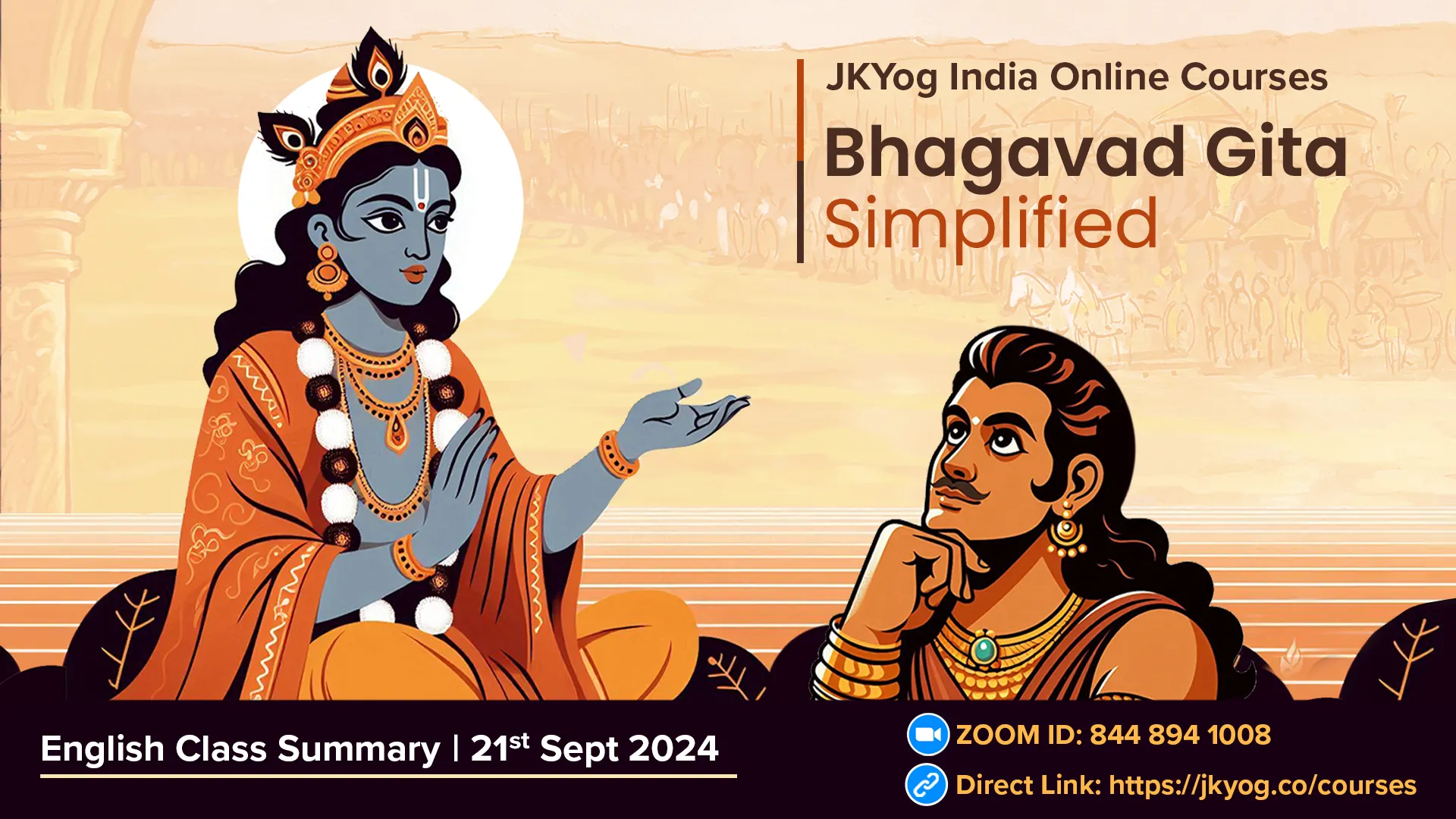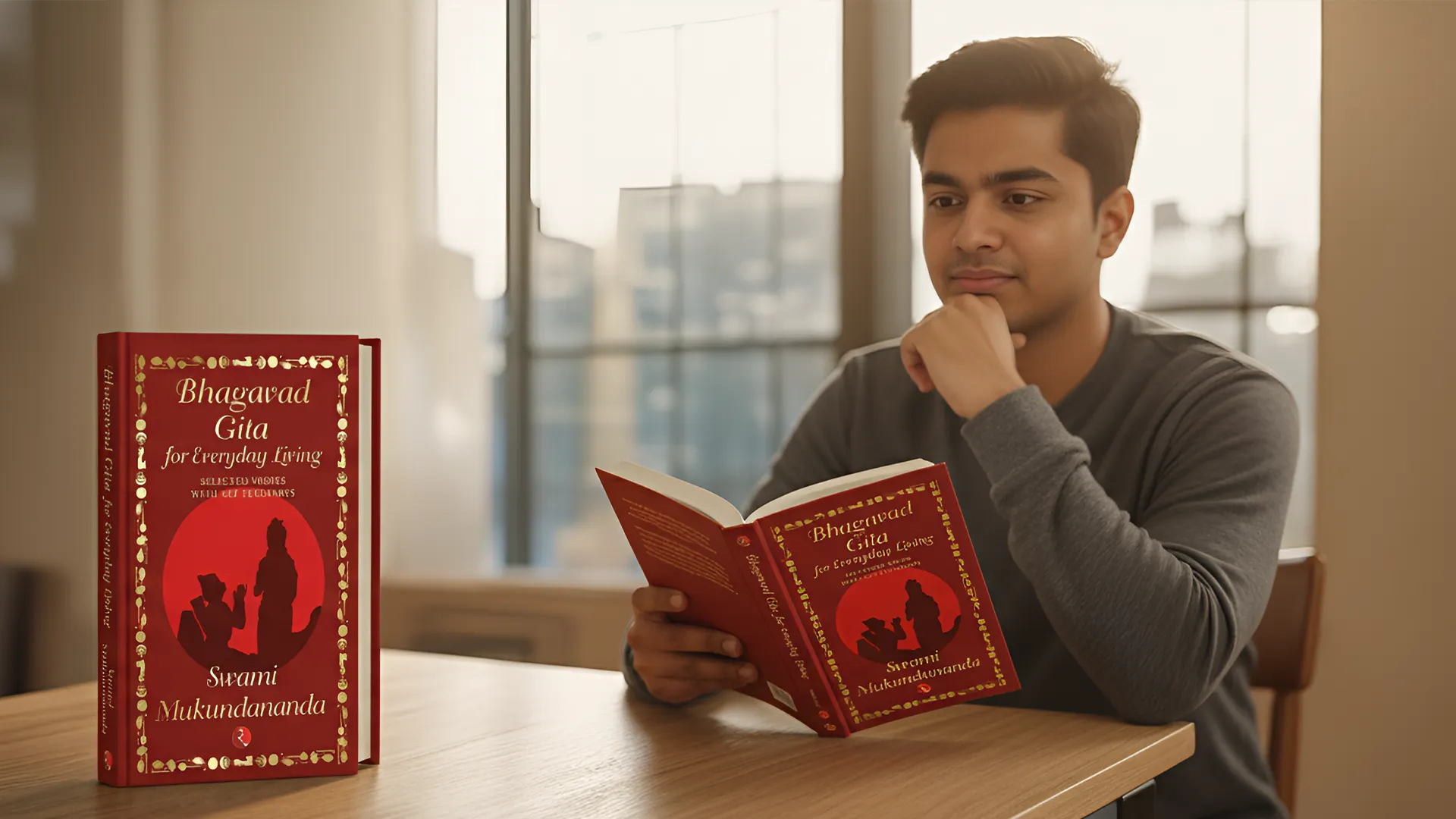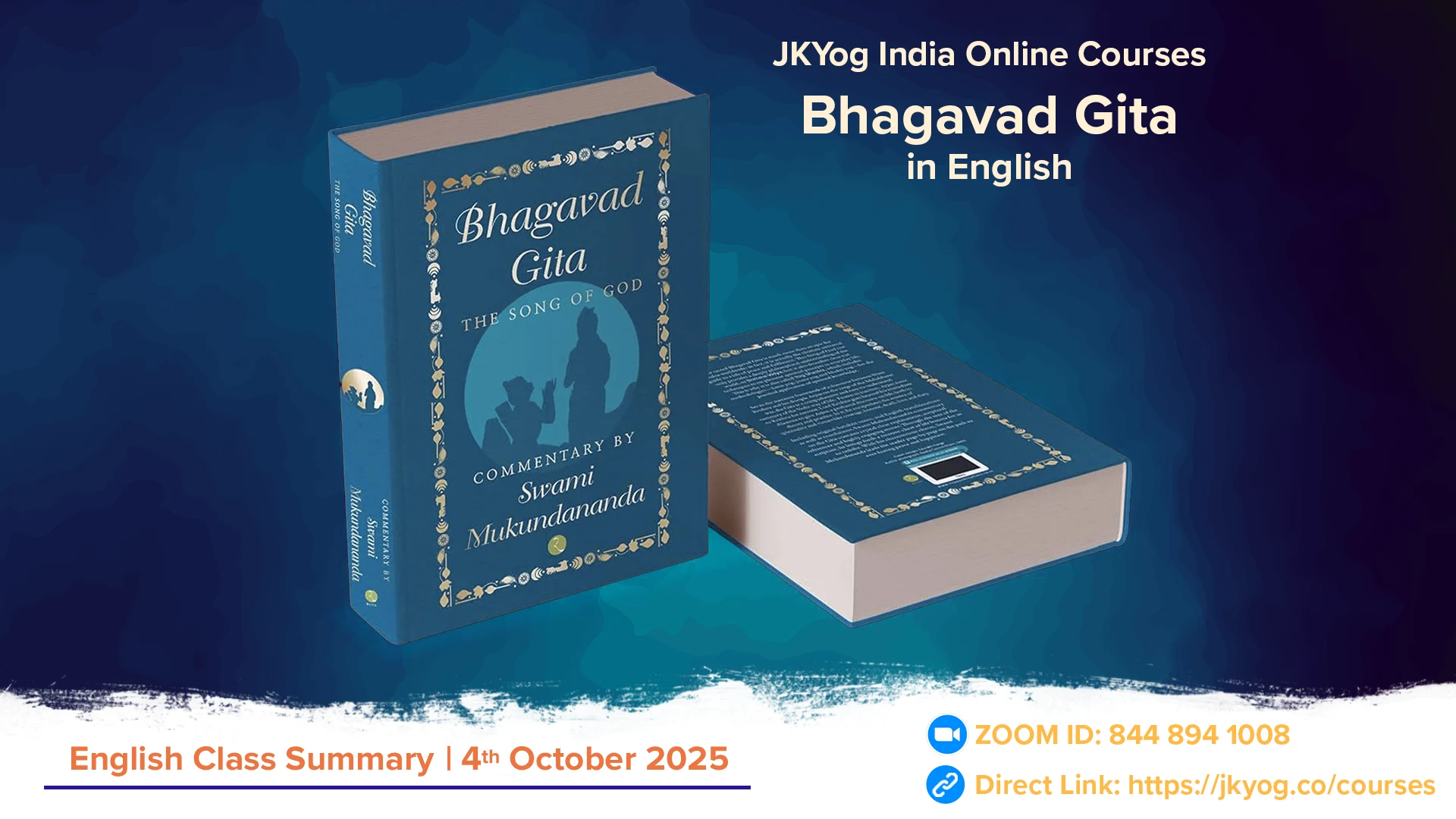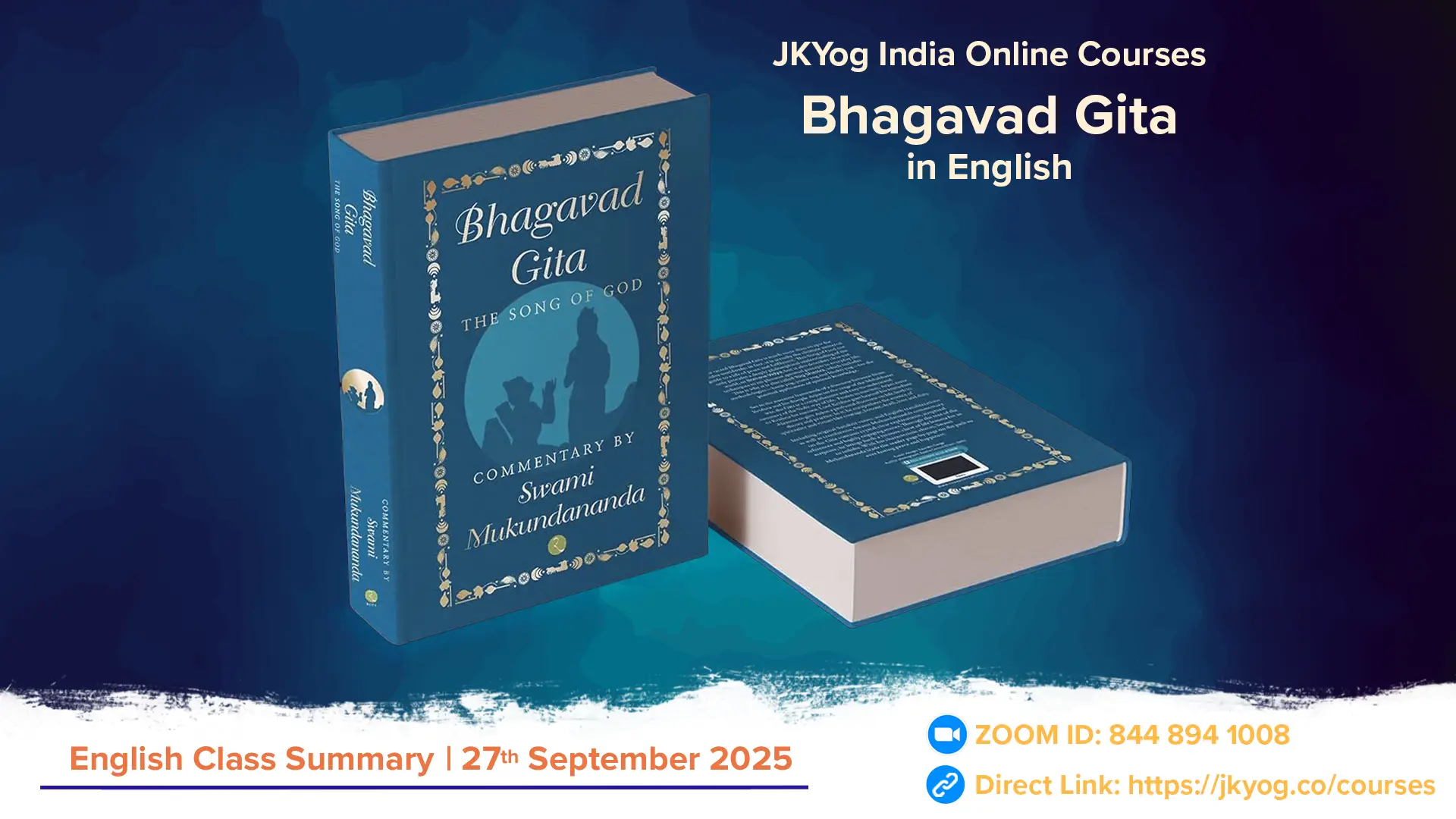Class 13 of the JKYog Online Class' Bhagavad Gita Simplified' focuses on how Shree Krishna describes His divine luxury, known as 'vibhūtis,' to nurture Arjun's devotion. Krishna explains that all beauty, glory, and power in the world are just a fraction of His immeasurable splendour. This helps Arjun understand Krishna's paramount position as the Supreme Controller of all creation, which ultimately strengthens Arjun's faith and dispels his doubts.
The Bhagavad Gita offers an invaluable journey into self-realisation and understanding the divine. This blog explores teachings from Krishna to Arjun, including Krishna's divine glories, His cosmic form, and the power of divine grace.
Arjun's Curiosity and Request to Witness Krishna's Cosmic Form
Arjun, desiring to understand Krishna's divine manifestations, asked Krishna to reveal His many glories.
अथवा बहुनैतेन किं ज्ञातेन तवार्जुन |
विस्तभ्याहमिदं कृत्स्नमेकांशेन स्थितो जगत् ||
"What need is there for all this detailed knowledge, O Arjun? Simply know that by one fraction of My being, I pervade and support this entire creation." (BG 10.42)
Through Krishna's grace, Arjun became endowed with divine vision and intellect, dispelling his illusion.
मदनुग्रहाय परमं गुह्यमध्यात्मसञ्ज्ञितम् |
यत्त्वयोक्तं वचस्तेन मोहोऽयं विगतो मम ||
"Arjun said: Having heard the supremely confidential spiritual knowledge which You have revealed out of compassion for me, my illusion is now dispelled.” (BG 11.1)
Krishna's Cosmic Form and Arjun's Divine Vision
To satisfy Arjun's curiosity, Krishna displayed His cosmic form, which could only be perceived through divine vision.
न तु मां शक्यसे द्रष्टुमनेनैव स्वचक्षुषा |
दिव्यं ददामि ते चक्षु: पश्य मे योगमैश्वरम् ||
"But you cannot see My cosmic form with these physical eyes of yours. Therefore, I grant you divine vision. Behold My majestic opulence!" (BG 11.8)
The cosmic form that Krishna showed was beyond the comprehension of material eyes, demonstrating His non-material, divine nature. The scene was described by Sanjay:
एवमुक्त्वा ततो राजन्महायोगेश्वरो हरि: |
दर्शयामास पार्थाय परमं रूपमैश्वरम् ||
"Sanjay said: O King, having spoken thus, the Supreme Lord of Yog, Shree Krishna, displayed His divine and opulent form to Arjun." (BG 11.9)
This form included multiple arms, faces, and dazzling radiance, which overwhelmed Arjun, causing awe and fear.
Arjun's Realisation and Plea for Forgiveness
As Arjun witnessed Krishna's divine form, his heart was filled with a mix of emotions — reverence, awe, and fear. He confessed his ignorance in recognising Krishna's divine personality and sought forgiveness for his past casual interactions.
रूपं महत्ते बहुवक्त्रनेत्रं महाबाहो बहुबाहूरुपादम् |
बहूदरं बहुदंष्ट्राकरालं दृष्ट्वा लोका: प्रव्यथितास्तथाहम् ||
"O mighty Lord, in veneration of Your magnificent form with its many mouths, eyes, arms, thighs, legs, stomachs, and terrifying teeth, all the worlds are terror-stricken, and so am I." (BG 11.23)
Arjun deeply regretted treating Krishna with familiarity, saying:
"Thinking of You as my friend, I presumptuously addressed You as 'O Krishna,' 'O Yadav,' 'O my dear Friend.' I was ignorant of Your Majesty, showing negligence and undue affection. And if jestfully I treated You with disrespect while playing, resting, sitting, eating, when alone or before others—for all that, I crave forgiveness." (BG 11.41-42)
Arjun's plea was deeply rooted in his realisation that Krishna's divine nature extended beyond mere friendship. He also asked Krishna to revert to a gentler form, preferring the familiarity they once shared.
Krishna's Compassionate Forms and Different Devotional Paths
Krishna has different forms, and each form evokes a distinct sentiment of devotion. These can be broadly divided into two types:
- Aishwarya Bhakti:
Characterised by reverence and awe, where devotees see Krishna as the Supreme God, maintaining a sense of distance. This was common among the residents of Dwarka and Ayodhya, who saw Krishna and Ram as kings. - Madhurya Bhakti:
Defined by a close, intimate relationship with Krishna, where the sentiment is "Shree Krishna is mine and I am His."Examples include the cowherd boys, Yashoda and Nanda, and the gopis of Vrindavan.
सबै सरस रस द्वारिका, मथुरा अरु ब्रज माहिँ।
मधुर, मधुरतर, मधुरतम, रस ब्रजरस सम नाहिँ ॥
"The divine bliss of God is immensely sweet in all His forms. Yet, there is a gradation in it—the bliss of His Dwarka pastimes is sweet, the bliss of His Mathura pastimes is sweeter, and the bliss of His Braj pastimes is the sweetest." (Bhakti Shatak 70)
In Madhurya Bhakti, devotees forge relationships such as:
- Dasya Bhav: Seeing Krishna as their Master.
- Sakhya Bhav: Loving Krishna as a friend, as the cowherd boys did.
- Vatsalya Bhav: Loving Krishna as a child, as Yashoda and Nanda did.
- Madhurya Bhav: Seeing Krishna as a beloved, as the gopis did.
Arjun, representing Sakhya Bhav, wished to return to the comfort of their former friendship, preferring this closeness over Krishna's cosmic opulence.
The Role of Grace and Devotion in Seeing God
Krishna explained that divine vision and union with Him are only attainable through pure, unalloyed devotion.
भक्त्या त्वनन्यया शक्य अहमेवंविधोऽर्जुन |
ज्ञातुं द्रष्टुं च तत्त्वेन प्रवेष्टुं च परन्तप ||
"O Arjun, by unalloyed devotion alone can I be known as I am standing before you. By receiving My divine vision, one can enter into union with Me." (BG 11.54)
Krishna explained that exclusive devotion comprises five key characteristics:
- Selfless Service: Performing all duties for Krishna's sake.
- Complete Dependence on Divine Grace: Trusting Krishna's grace instead of self-effort.
- Focused Devotion: Making Krishna the sole object of devotion.
- Detachment from the World: Being free of worldly attachments.
- Absence of Malice: Harboring no ill will, seeing all beings as manifestations of the divine.
मत्कर्मकृन्मत्परमो मद्भक्त: सङ्गवर्जित: |
निर्वैर: सर्वभूतेषु य: स मामेति पाण्डव ||
"Those who perform all their duties for My sake, who depend upon Me, are devoted to Me, free from attachment, and are without malice towards all beings—such devotees certainly come to Me." (BG 11.55)
Conclusion
The teachings of the Bhagavad Gita highlight Krishna's boundless grace, the importance of devotion, and the ultimate realisation of the divine. Krishna's cosmic form emphasises the need for divine vision, accessible only through grace, while the different types of devotion reveal the intimate ways in which one can connect with Him.
Krishna's compassionate revelation to Arjun underscores that a genuine connection with the divine transcends formalities—what matters most is unwavering, exclusive devotion and grace.
Summary: JKYog India Online Class- Bhagavad Gita Simplified [English]- 21st September 2024








